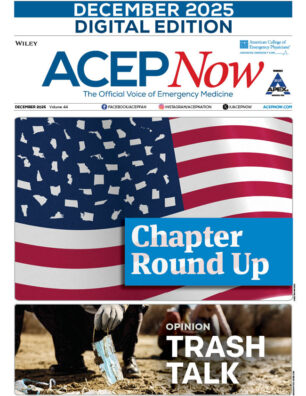An important change is being made to the label of epinephrine. Traditionally, the two doses of epinephrine have been labeled and called 1:1000 (used traditionally for anaphylaxis) and 1:10,000 (used for cardiac arrest). There has often been confusion between the two doses and uses. Now, the labels will be changed to 1 mg/mL (1:1000) and 0.1 mg/mL (1:10,000). It is hoped that this change will decrease or eliminate the confusion. The labeling of epinephrine combined with other drugs (such as lidocaine) will not change.
Explore This Issue
ACEP Now: Vol 35 – No 10 – October 2016In addition, isoproterenol 1:5000 will now be labeled 0.2 mg/mL, and neostigmine 1:1000 will be labeled as 1 mg/mL.





No Responses to “FDA Changes Epinephrine Label, Revises Dosage Instructions for Anaphylaxis, Cardiac Arrest”